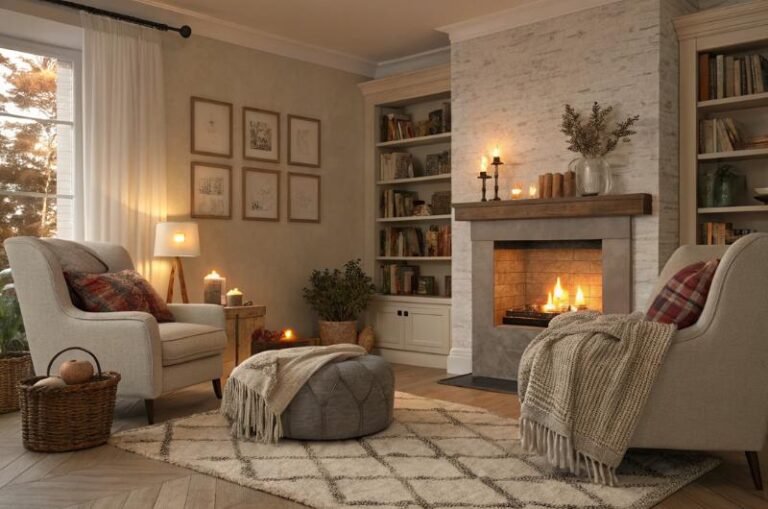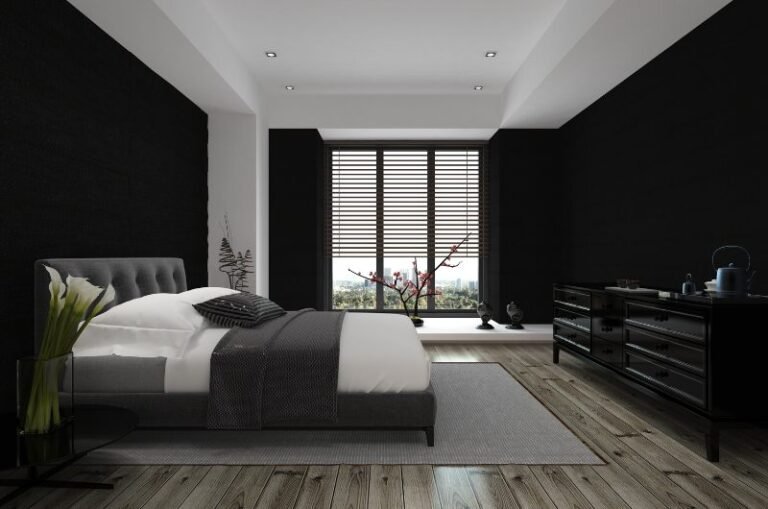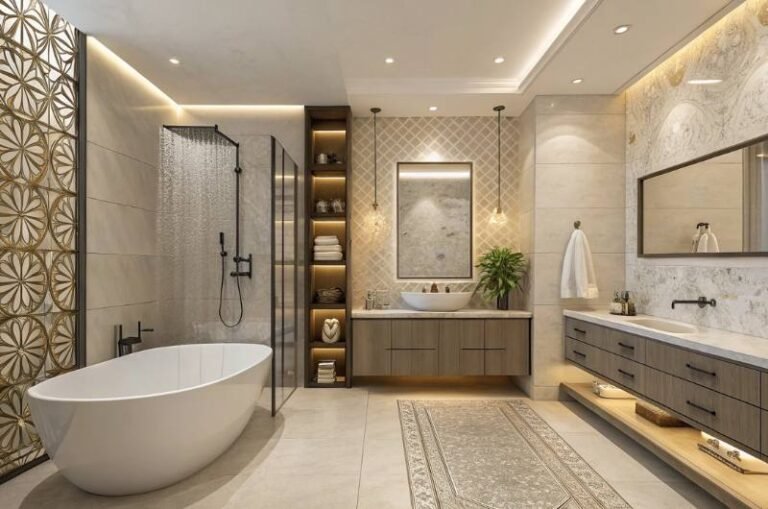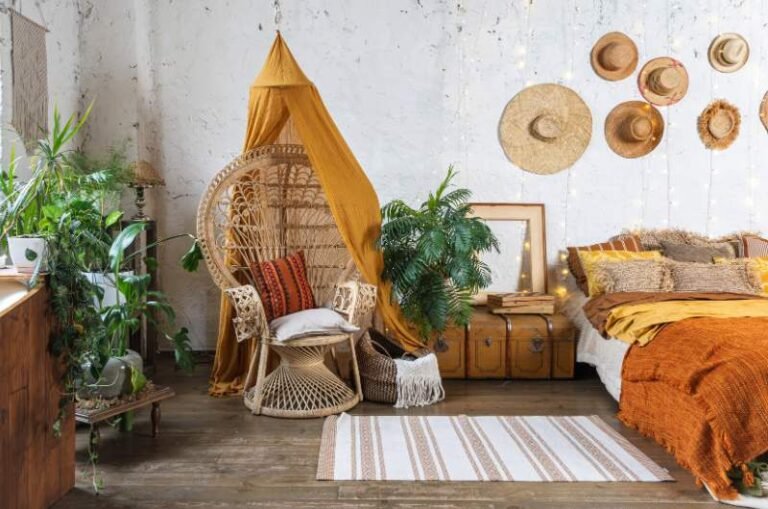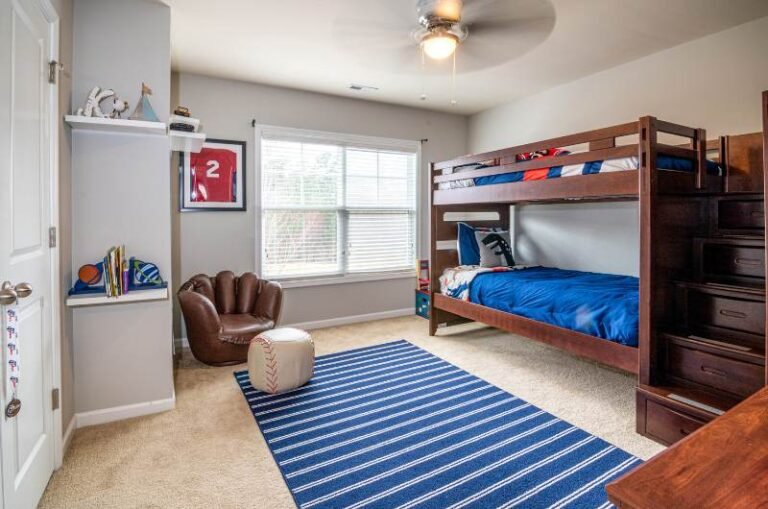How to Decorate a Living Room
The living room is often considered the heart of the home. It’s where we entertain guests, relax after a long day, and spend quality time with family. As such, decorating this space is about more than just aesthetics—it’s about creating a functional, comfortable, and inviting environment that reflects your personality and lifestyle.
Whether you’re starting from scratch or looking to refresh your current living room, this guide will walk you through every step of the process. From choosing a color scheme to selecting furniture and accessories, we’ll cover everything you need to know to create a living room you’ll love.
1. Define Your Style
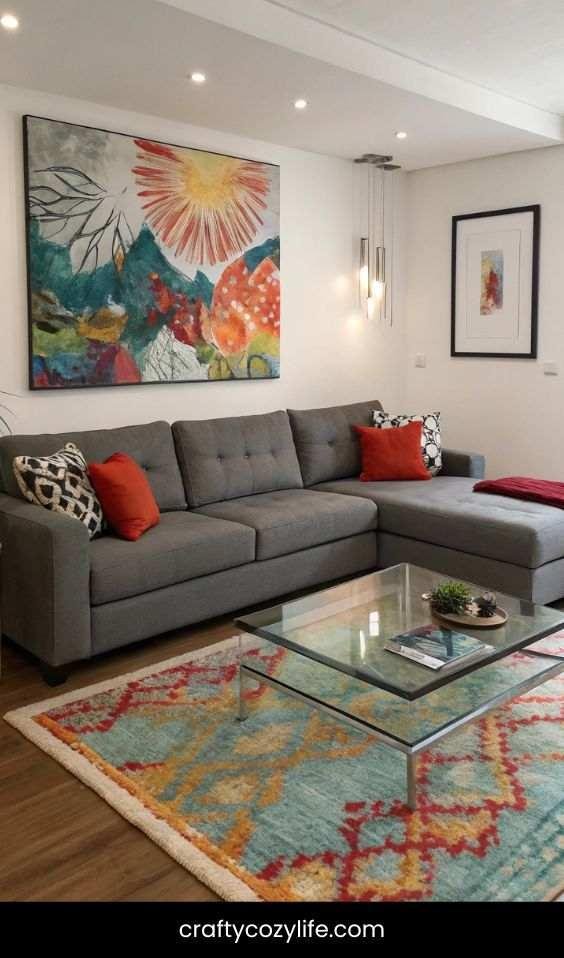
Before diving into decorating, it’s essential to identify your personal style. Your living room should reflect your tastes and preferences, so take some time to explore different design styles and determine what resonates with you.
Popular Living Room Styles:
- Modern: Clean lines, minimalism, and neutral colors.
- Traditional: Classic furniture, rich colors, and ornate details.
- Bohemian: Eclectic patterns, vibrant colors, and layered textures.
- Scandinavian: Light colors, natural materials, and functional furniture.
- Industrial: Exposed brick, metal accents, and raw materials.
- Farmhouse: Rustic elements, cozy textiles, and vintage touches.
Picture This: Imagine walking into a modern living room with a sleek, gray sectional sofa, a glass coffee table, and a large abstract painting on the wall. The space feels open and uncluttered, with pops of color from a few strategically placed throw pillows and a vibrant area rug.
Once you’ve identified your style, use it as a guiding principle for all your design decisions.
2. Choose a Color Scheme
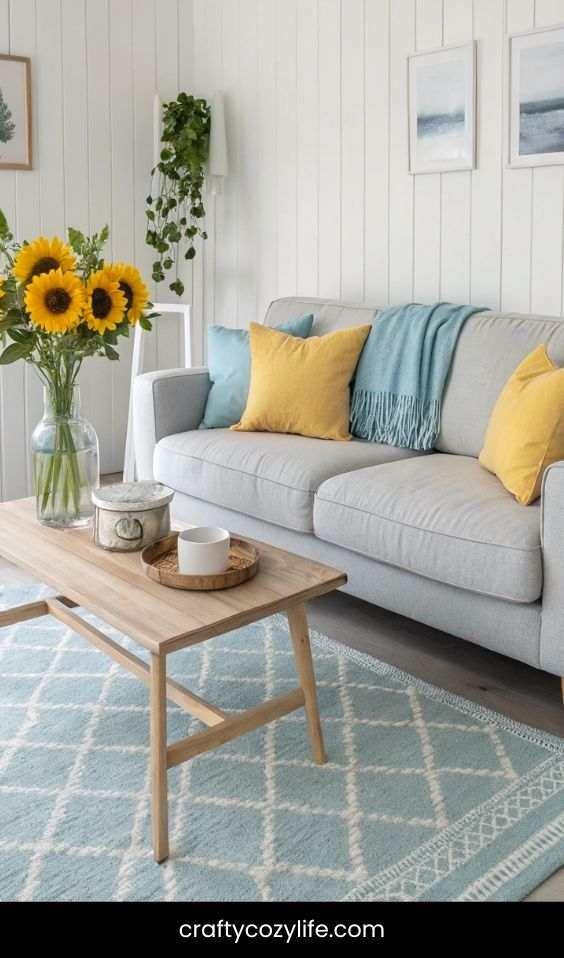
The color scheme sets the tone for your living room and influences the overall mood of the space. Here’s how to choose the perfect palette:
Tips for Selecting a Color Scheme:
- Consider the Room’s Purpose: If you want a calming space, opt for soft neutrals or cool tones like blues and greens. For a vibrant, energetic room, go for bold colors like reds or yellows.
- Use the 60-30-10 Rule: Divide your color scheme into three proportions: 60% for the dominant color (walls, large furniture), 30% for the secondary color (upholstery, curtains), and 10% for accent colors (decorative items).
- Test Samples: Paint small sections of your wall or use fabric swatches to see how colors look in different lighting.
Picture This: A Scandinavian-inspired living room with white walls, a light gray sofa, and a pale wood coffee table. The 30% secondary color comes from soft blue throw pillows and a matching area rug, while the 10% accent color is introduced through yellow cushions and a vase of fresh sunflowers.
Popular Color Combinations:
- Neutral tones (beige, gray, white) with pops of color.
- Monochromatic shades of blue or green.
- Warm earthy tones like terracotta, mustard, and olive.
3. Plan Your Layout
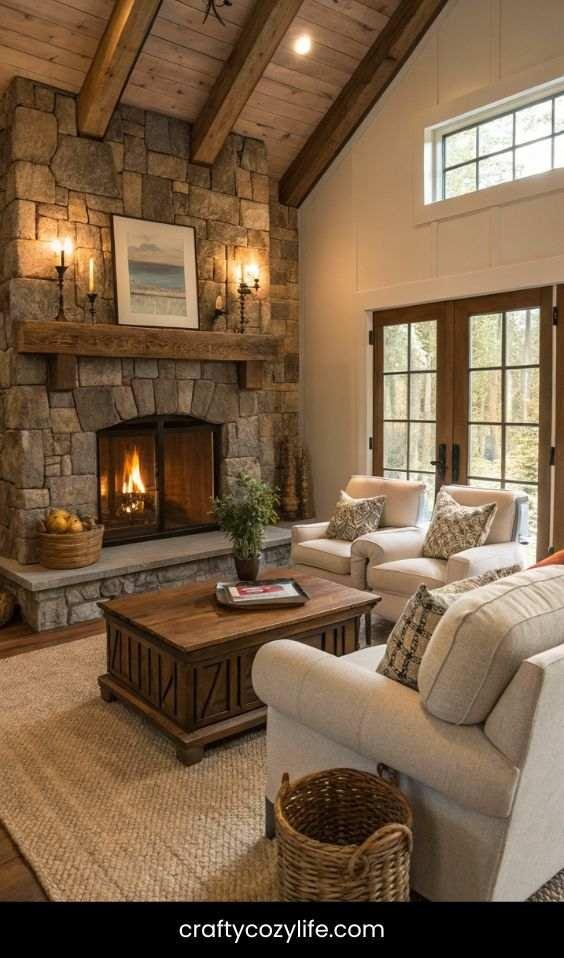
A well-thought-out layout ensures your living room is both functional and visually appealing. Start by measuring your space and creating a floor plan.
Key Considerations:
- Focal Point: Identify the room’s focal point, such as a fireplace, TV, or large window, and arrange furniture around it.
- Traffic Flow: Ensure there’s enough space to move around comfortably without bumping into furniture.
- Conversation Areas: Arrange seating to encourage conversation. A common setup is a sofa facing two armchairs or a sectional with a coffee table in the center.
Picture This: A cozy farmhouse living room with a large stone fireplace as the focal point. A plush sofa faces the fireplace, flanked by two armchairs and a rustic wooden coffee table. A jute rug anchors the seating area, and a woven basket in the corner holds extra blankets.
Furniture Placement Tips:
- Leave at least 18 inches between the coffee table and sofa for easy movement.
- Avoid pushing all furniture against the walls; floating pieces can create a more intimate setting.
- Use rugs to anchor seating areas and define spaces in open-concept rooms.
4. Select the Right Furniture
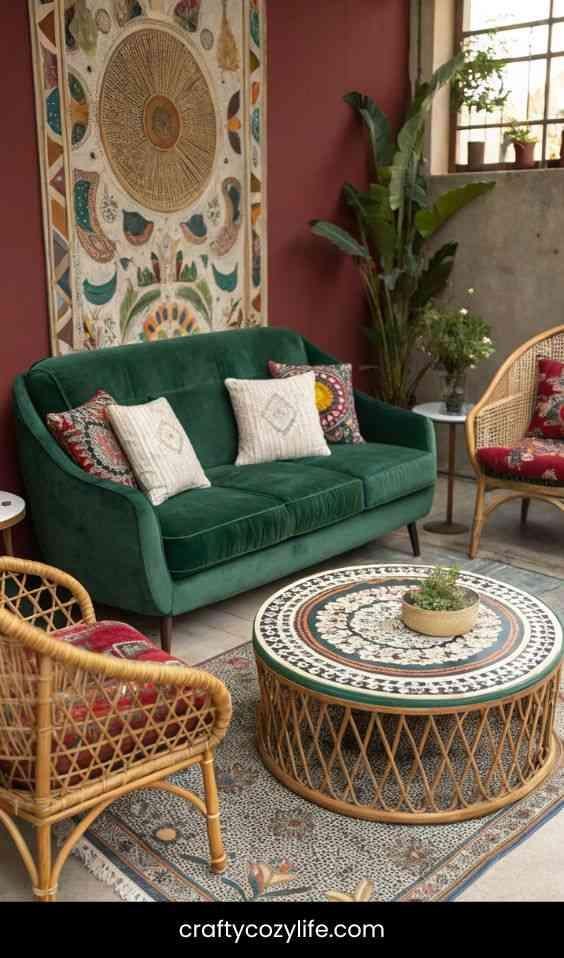
Furniture is the backbone of your living room, so choose pieces that are both stylish and functional.
Essential Living Room Furniture:
- Sofa: The centerpiece of the room. Choose a size and style that fits your space and complements your decor.
- Armchairs: Add extra seating and visual interest.
- Coffee Table: A practical and decorative element. Consider round tables for small spaces to avoid sharp corners.
- Side Tables: Perfect for holding lamps, drinks, or decor.
- TV Stand or Media Console: Keep your entertainment area organized.
Picture This: A bohemian living room with a deep, emerald green velvet sofa, a pair of rattan armchairs, and a round, mosaic coffee table. The eclectic mix of textures and colors creates a vibrant, inviting space.
Tips for Choosing Furniture:
- Prioritize comfort, especially for pieces you’ll use daily.
- Mix and match materials (e.g., a leather sofa with fabric chairs) for added texture.
- Don’t overcrowd the room—leave plenty of open space.
5. Layer Lighting
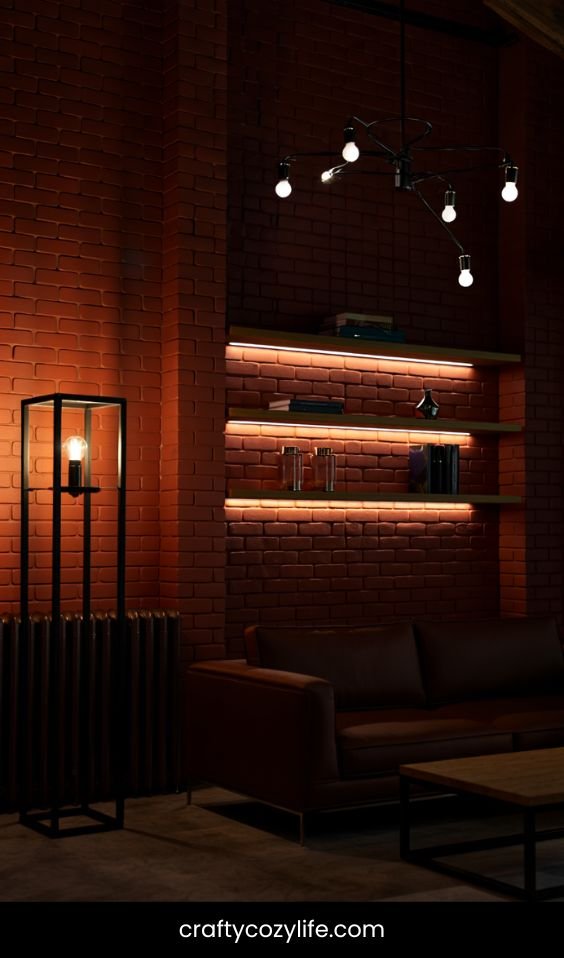
Lighting plays a crucial role in creating ambiance and functionality in your living room. A well-lit space incorporates multiple layers of light.
Types of Lighting:
- Ambient Lighting: The primary source of light, such as ceiling fixtures or chandeliers.
- Task Lighting: Focused light for specific activities, like reading lamps or floor lamps.
- Accent Lighting: Highlights architectural features or decor, such as wall sconces or LED strip lights.
Picture This: An industrial living room with exposed brick walls and a metal chandelier providing ambient lighting. A sleek floor lamp next to the sofa offers task lighting for reading, while LED strip lights under the floating shelves add a modern, accent glow.
Lighting Tips:
- Use dimmers to adjust the brightness and set the mood.
- Incorporate a mix of lighting sources to avoid harsh shadows.
- Choose fixtures that complement your decor style.
6. Add Textures and Patterns
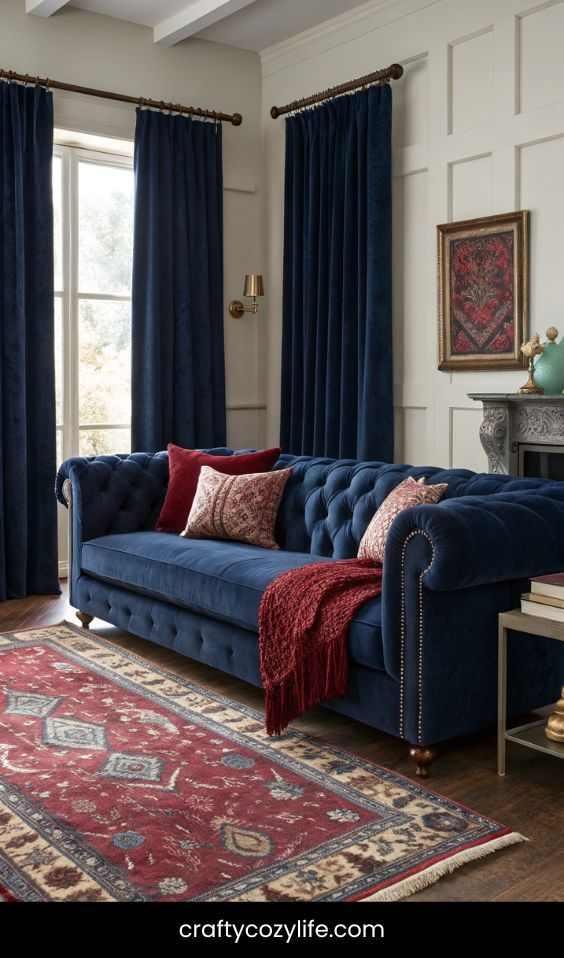
Textures and patterns add depth and interest to your living room, preventing it from looking flat or monotonous.
Ways to Incorporate Texture:
- Rugs: Layer rugs for added warmth and dimension.
- Throw Pillows and Blankets: Mix fabrics like velvet, linen, and wool.
- Curtains: Choose heavy drapes for a cozy feel or light sheers for an airy look.
- Upholstery: Combine different materials, such as leather, cotton, and microfiber.
Picture This: A traditional living room with a plush, tufted sofa in a rich navy fabric, paired with a Persian rug in deep reds and blues. Velvet throw pillows and a knitted blanket add layers of texture, while heavy, floor-length curtains in a matching navy hue complete the look.
Tips for Using Patterns:
- Stick to a cohesive color palette to avoid clashing.
- Balance bold patterns with solid colors to prevent overwhelming the space.
- Use patterns sparingly for a sophisticated look.
7. Incorporate Art and Decor
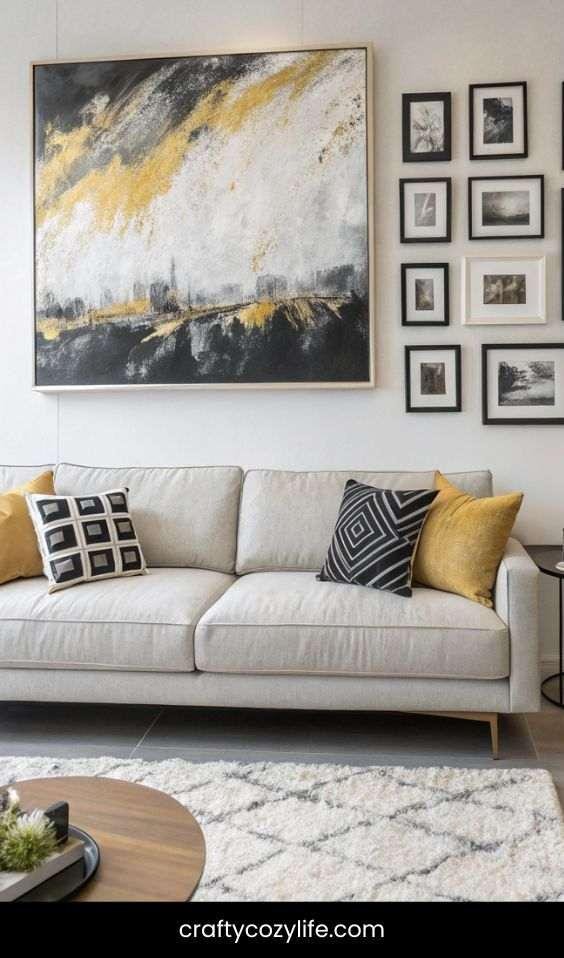
Art and decor personalize your living room and make it feel like home. Here’s how to choose and arrange these elements:
Choosing Art:
- Select pieces that resonate with you and complement your color scheme.
- Consider the size of your walls—large art makes a statement, while smaller pieces work well in groupings.
- Mix different types of art, such as paintings, photographs, and sculptures.
Picture This: A modern living room with a large, abstract painting above the sofa in shades of black, white, and gold. A collection of smaller black-and-white photographs is arranged in a gallery wall on the adjacent wall, creating a cohesive yet dynamic display.
Decor Ideas:
- Mirrors: Reflect light and make the room feel larger.
- Plants: Add life and freshness to the space.
- Books: Display them on shelves or coffee tables for a cozy vibe.
- Candles: Create a warm, inviting atmosphere.
Arranging Decor:
- Use the rule of threes: Group items in odd numbers for a balanced look.
- Vary heights and sizes to create visual interest.
- Don’t overcrowd surfaces—leave some empty space for a clean, uncluttered look.
8. Maximize Storage
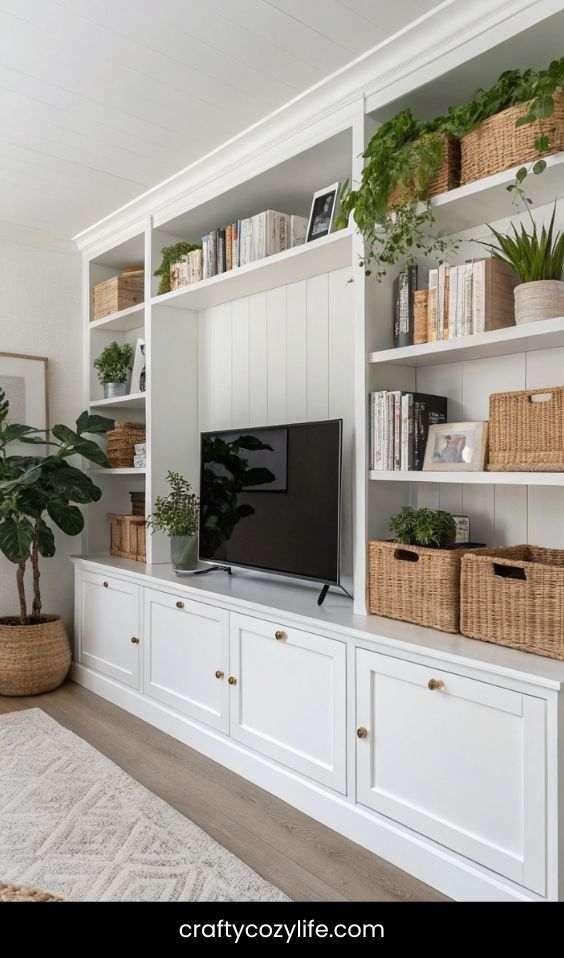
A clutter-free living room is essential for maintaining a peaceful and organized space. Incorporate storage solutions that blend seamlessly with your decor.
Storage Ideas:
- Built-In Shelves: Perfect for displaying books, decor, and media.
- Storage Ottomans: Double as seating and hidden storage.
- Media Consoles with Cabinets: Keep electronics and cords out of sight.
- Baskets and Bins: Ideal for storing blankets, toys, or magazines.
Picture This: A Scandinavian living room with built-in shelves painted white to match the walls. The shelves are neatly organized with books, potted plants, and woven baskets for storage. A sleek media console with hidden cabinets keeps the TV area tidy.
Tips for Organizing:
- Declutter regularly to keep the space tidy.
- Use decorative boxes or baskets to hide smaller items.
- Label storage containers for easy access.
9. Personalize Your Space
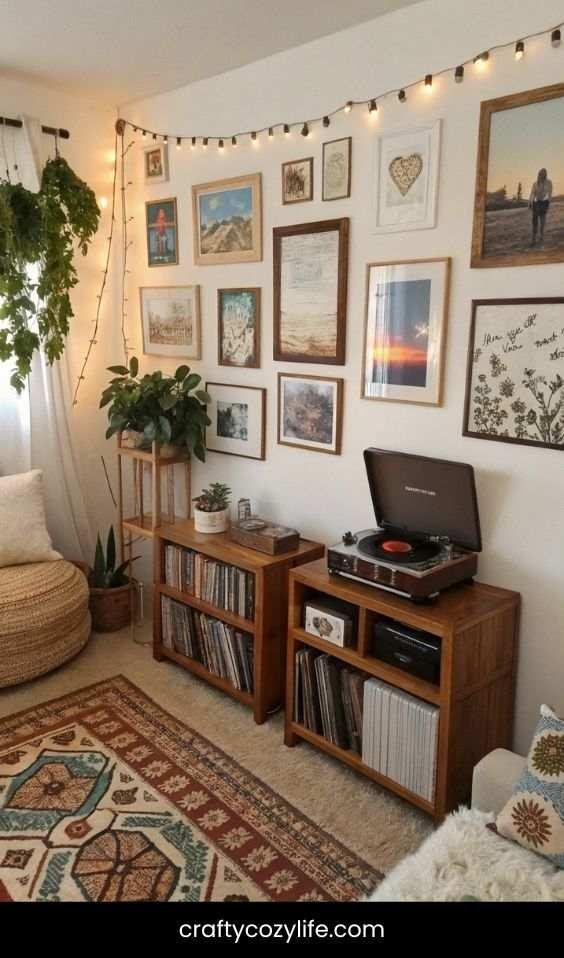
Your living room should reflect your personality and tell your story. Incorporate elements that are meaningful to you, such as family photos, travel souvenirs, or handmade items.
Ways to Personalize:
- Create a gallery wall with a mix of art, photos, and memorabilia.
- Display collections, such as vintage books, ceramics, or records.
- Use custom-made or DIY decor for a unique touch.
Picture This: A bohemian living room with a gallery wall featuring a mix of family photos, postcards from travels, and handmade art. A vintage record player sits on a side table, surrounded by a collection of vinyl records, adding a personal and nostalgic touch.
10. Experiment with Wall Treatments
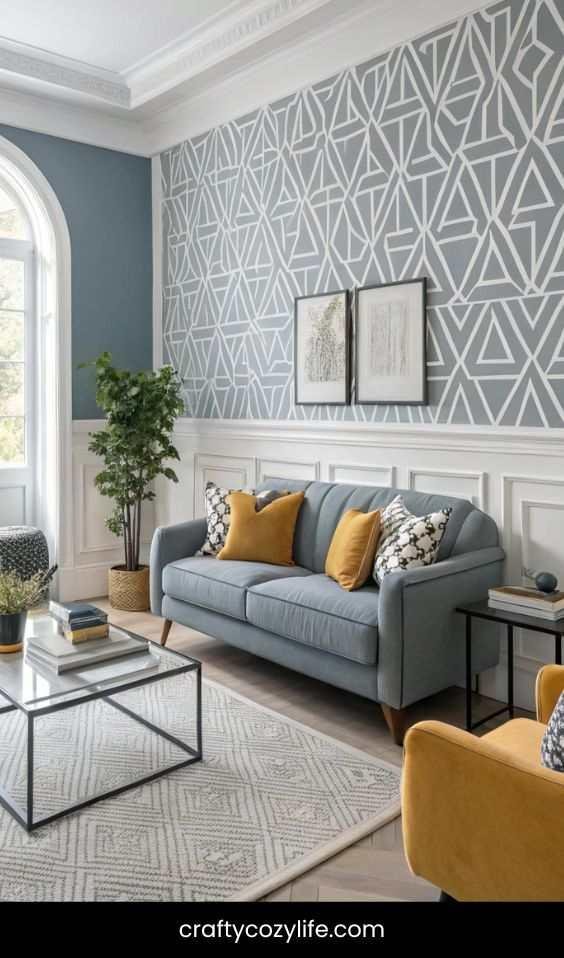
Wall treatments can add texture, color, and personality to your living room, making it truly unique.
Wall Treatment Ideas:
- Accent Walls: Paint one wall a bold color or use wallpaper to create a focal point.
- Wainscoting: Add classic elegance with wooden panels on the lower half of the walls.
- Textured Paint: Use techniques like sponging or rag rolling for a textured effect.
- Wall Decals: Easy to apply and remove, perfect for renters or those who like to change things up.
- Exposed Brick: For an industrial or rustic look, leave brick walls exposed or use brick veneer.
Picture This: A modern living room with a striking accent wall covered in geometric-patterned wallpaper. The other walls are painted in a soft gray, creating a perfect balance between bold and neutral tones.
11. Incorporate Smart Technology
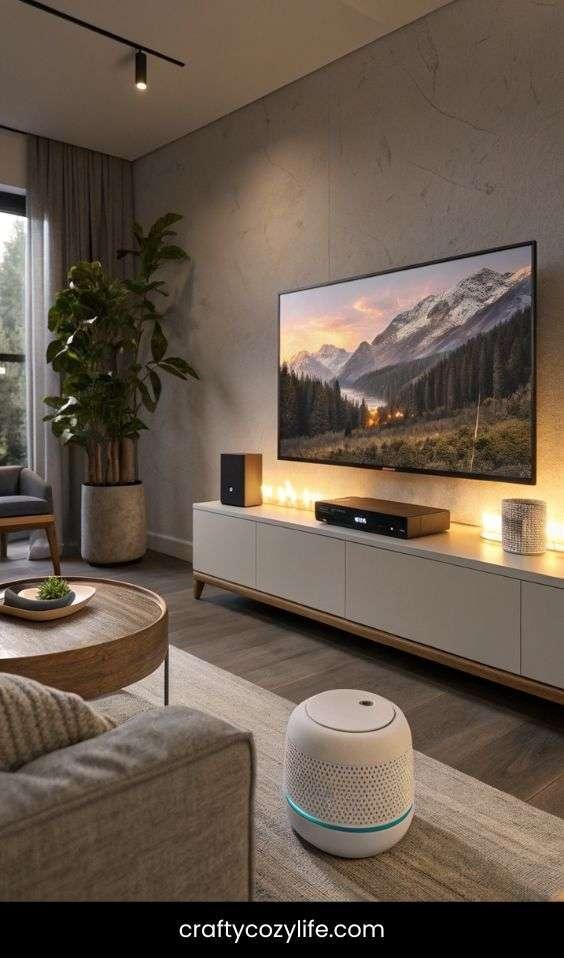
Modern living rooms can benefit from the integration of smart technology, making the space more convenient and efficient.
Smart Technology Ideas:
- Smart Lighting: Use smart bulbs or lighting systems that can be controlled via an app or voice commands.
- Smart Speakers: Integrate devices like Amazon Echo or Google Nest for music, news, and smart home control.
- Smart Thermostats: Maintain the perfect temperature with a programmable thermostat.
- Smart TVs: Stream content seamlessly and control your TV with your voice or smartphone.
- Smart Plugs: Turn any appliance into a smart device with plugs that can be controlled remotely.
Picture This: A contemporary living room where the lights dim automatically as the movie starts on the smart TV, and the smart speaker plays your favorite playlist with a simple voice command.
12. Create a Cozy Reading Nook
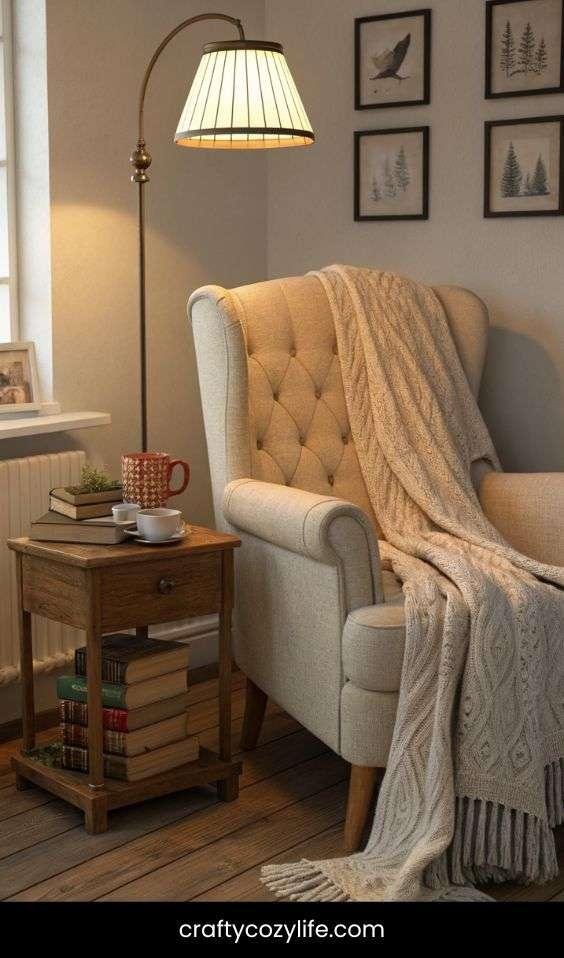
If you love to read, why not dedicate a corner of your living room to a cozy reading nook?
Elements of a Reading Nook:
- Comfortable Chair: Choose an armchair or a chaise lounge with plenty of cushions.
- Side Table: A small table for your coffee, books, or reading lamp.
- Lighting: A floor lamp or a wall-mounted reading light.
- Bookshelves: Keep your favorite books within easy reach.
- Throw Blanket: Add a soft blanket for extra comfort.
Picture This: A corner of the living room with a plush armchair, a small wooden side table holding a cup of tea and a stack of books, and a floor lamp casting a warm glow. A soft, knitted throw blanket is draped over the chair, inviting you to sit and relax.
13. Utilize Vertical Space
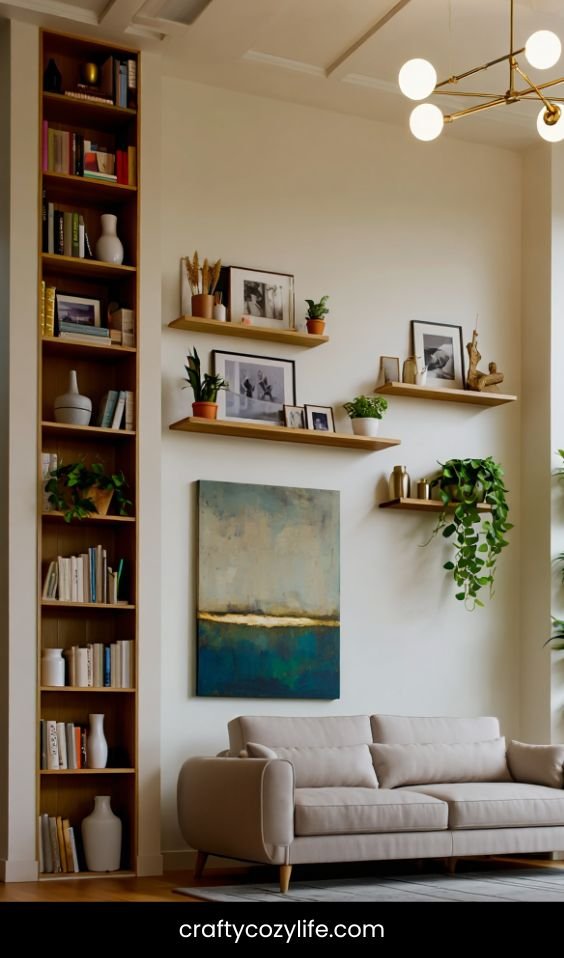
Maximize your living room’s potential by making use of vertical space for both storage and decor.
Vertical Space Ideas:
- Floating Shelves: Install shelves above sofas or in empty corners to display books, plants, and decor.
- Tall Bookcases: Use tall bookcases to store books and display decorative items.
- Wall Art: Hang large pieces of art or create a gallery wall to draw the eye upward.
- Vertical Gardens: Incorporate wall-mounted planters for a touch of greenery.
- Hanging Lights: Use pendant lights or chandeliers to add height and interest.
Picture This: A living room with a tall bookcase filled with books and decorative items, floating shelves above the sofa displaying a mix of art and plants, and a striking chandelier hanging from the ceiling, creating a sense of height and space.
14. Incorporate Multi-Functional Furniture
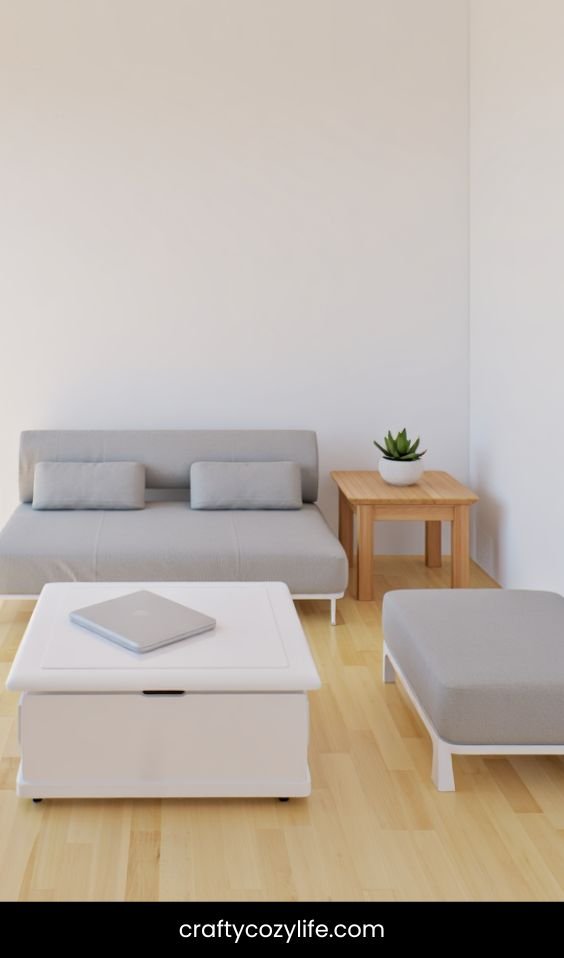
In smaller living rooms, multi-functional furniture can be a game-changer, offering both style and practicality.
Multi-Functional Furniture Ideas:
- Sofa Beds: Perfect for accommodating overnight guests.
- Storage Ottomans: Provide extra seating and hidden storage.
- Nesting Tables: Can be used separately or together, depending on your needs.
- Convertible Coffee Tables: Transform into dining tables or desks.
- Modular Sectionals: Can be rearranged to fit different spaces and needs.
Picture This: A compact living room with a sleek sofa bed, a storage ottoman that doubles as a coffee table, and a set of nesting tables that can be easily moved around. The space is both stylish and highly functional.
Conclusion
Decorating a living room is a rewarding process that allows you to create a space that’s both beautiful and functional. By following these steps—defining your style, choosing a color scheme, planning your layout, selecting furniture, and adding personal touches—you can design a living room that truly feels like home.
Remember, the key to successful decorating is to stay true to your tastes and needs. Don’t be afraid to experiment and make changes as you go. After all, your living room is a reflection of you, and it should evolve as your life and preferences do.
Happy decorating!


